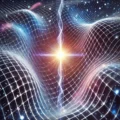Death of Local Realism: When Quantum Predictions Clashed with Classical Intuition
Overview
Bell’s Theorem is widely regarded as a critical turning point in the philosophy of physics. It demonstrated that no theory based on local hidden variables can reproduce all the predictions of quantum mechanics. This result struck at the heart of Einstein’s realist program and suggested that any viable theory of nature must violate at least one of two deeply held classical assumptions: locality or realism.
By transforming a philosophical dispute into an experimentally testable proposition, John Bell reframed the Einstein–Bohr debate. His theorem marked the moment when quantum weirdness moved from abstract metaphysics to the domain of empirical science.
Principal Figures
- John S. Bell (1964) – Physicist at CERN who formulated the now-famous inequality that could distinguish local hidden variable theories from quantum mechanics.
- John Clauser, Alain Aspect, Anton Zeilinger (1970s–1990s) – Designed and executed increasingly rigorous experimental tests of Bell’s inequalities.
- David Bohm – Developed a nonlocal hidden variable model (Bohmian mechanics) that sidestepped Bell’s constraints on local realism.
- Einstein and Bohr – Their foundational dispute provided the backdrop to Bell’s investigation.
The Assumptions of Bell’s Theorem
Bell’s inequality depends on a few key assumptions:
- Realism: Physical properties exist with definite values, even if unmeasured.
- Locality: No influence can propagate faster than the speed of light.
- Freedom of Choice: Measurement settings can be chosen independently of the hidden variables.
Experimental Violations
- 1972: Clauser–Freedman experiment shows early violation of Bell inequality.
- 1982: Alain Aspect performs a series of experiments with fast-switching polarizers to close the locality loophole.
- 2015: “Loophole-free” Bell tests simultaneously close the detection and locality loopholes using entangled photons, electrons, and ions.
Across these experiments, nature consistently violates Bell’s inequalities, supporting quantum entanglement over classical realism.
Philosophical Impact
Bell’s Theorem forced physicists to confront one of two uncomfortable truths:
- Nonlocality is real: Distant events can be instantaneously correlated in a way that defies spacetime-based causality.
- Objective properties don’t exist before measurement: Reality may be created—or at least completed—by observation.
This dichotomy shattered the hope for a purely local, deterministic universe. Quantum mechanics emerged vindicated but stranger than ever.
Implications for the Charge Admittance (CA) Model
The CA theory, with its foundation in structured vacuum impedance (Ξ), provides a third path between naïve realism and probabilistic mysticism.
Key contrasts and alignments:
- Realism Reclaimed: CA posits that entangled systems remain correlated due to their shared lattice origin—encoded in Ξ-structured field memory, not instant action at a distance.
- Local Nonlocality: While Bell excludes local hidden variables, CA allows spatially extended field coupling—a kind of distributed memory through the medium, not a signal exchange. Nonlocal correlations arise naturally when fields co-evolve through shared Ξ conditions.
- Determinism through Thresholds: Measurement outcomes are not probabilistic collapses but the deterministic crossing of field admittance thresholds. The outcome is predictable in principle, though complex in execution.
- Bell Loophole?: CA suggests the “locality” assumption in Bell tests may oversimplify the nature of field connectivity. Fields are not pointlike; they are continuous media with structure and resonance across space. This reframes “locality” in a CA-compatible way, without invoking superluminal communication.
In this view, CA doesn’t violate Bell’s results—it transcends their assumptions.
Reframing Bell in the CA Context
- No spooky action: Just Ξ-structured continuity in field configurations across entangled creation points.
- No collapse: Observation modifies local field tension and draws energy from the lattice in a constrained, deterministic way.
- No magic: The violation of Bell inequalities is not mystical—it reflects how structured fields resolve correlated outcomes through resonance, not randomness.
Bell closed the door on classical realism—but CA opens a new one grounded in field realism.
Continuing Questions
- Can Bell-violation experiments be replicated using controlled Ξ-field manipulations?
- Do high-Ξ regions permit classical-like deterministic behavior, shielding against apparent Bell violations?
- Can CA generate novel predictions distinguishable from standard quantum mechanics in entanglement dynamics?
These questions point toward a structured field ontology that may restore determinism without invoking hidden variables.
